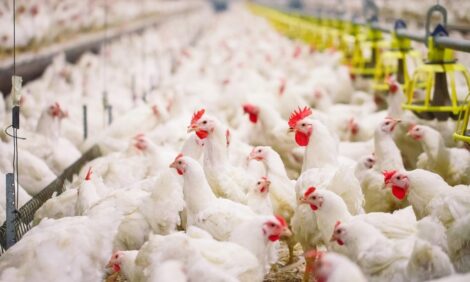



US Poultry Industry Manual - Managing pheasant breeders
Learn how to choose the right variety of bird for breeding stockPart of Series:
< Previous Article in Series Next Article in Series >
Editor's Note: The following content is an excerpt from Poultry Industry Manual: The Foreign Animal Disease Preparedness and Response Plan (FAD PReP)/National Animal Health Emergency Management System (NAHEMS) Guidelines which is designed to provide a framework for dealing with an animal health emergency in the United States. Additional content from the manual will be provided as an article series.
Choosing the right variety of bird for breeding stock is a matter of regional preference.
Pheasants are often divided into two primary types: large or small.
- Larger pheasants are slower flyers, but are meatier and more impressive-looking due to their body size and tail length. Mongolians are an example of a large pheasant strain (approximately 3.5 lb. average). In addition to Mongolians, there is an all white pheasant which was bred primarily for meat production.
- Small pheasants are faster flyers and more challenging to hunt. Chinese Blue Backs are one of the small varieties and the Kansas Blue Back is currently the smallest variety (approximately 2-3 lb average). Melanistic Mutants are a very dark variety.
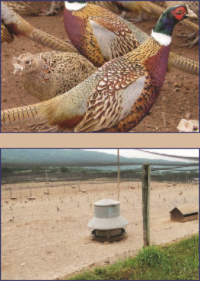
Pheasants show sexual dimorphism. Roosters have bright iridescent feathering, a white ring around the neck, rusty colored breasts, green/blue heads with red facial marking, and long barred tails. Hens by comparison are relatively dull with dusky, nondescript feathering.
For egg production to begin, 14 hours of light are required. As with other birds, artificial light can be used to stimulate early onset of sexual maturity if the natural day length is under 14 hours. From March 1-July 1, artificial lighting is not required and most breeders rely on natural day length.
When sexually mature, hens and roosters are placed together in outdoor breeder pens. A typical space requirement for breeders is 25-30 square feet per bird. One rooster per 8-12 hens is sufficient to maintain fertility. Too many males will result in excessive fighting between roosters and trauma to hens.
Breeder pens should be devoid of cover crops to make finding eggs easier. Nest boxes lined with wood chips or straw are placed in pens, but ground eggs are still very common. On average, a single pheasant hen will lay approximately 75 eggs. A typical 75% hatch rate results in production of 5060 live chicks per breeder hen.
Eggs should be collected at least daily, but during hot or rainy periods, egg collection should occur 3-5 times per day. Eggs are washed, sanitized, and set in the incubators.
Hatching pheasant eggs
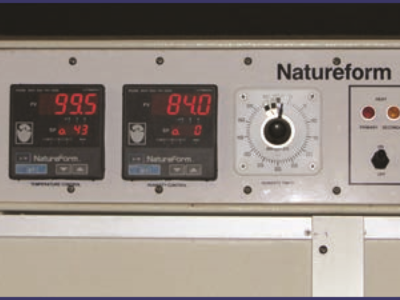
Pheasant eggs are set every 7-14 days. Incubator temperature should be approximately 99.5°F and wet-bulb humidity set at 84%-85%. The incubation period for pheasant eggs is 24 days. At around 21 days of age, eggs are transferred into a hatcher with a temperature of 98.5°F. Humidity also increases at this time due to hatching of chicks.
Commercial pheasant chicks are usually sold straight-run. However, some chicks are sexed immediately after hatching for customers who demand males or females. Chicks are sexed by examining the patch of long down
under the eyes of the rooster and hen (the down patch is much wider in the hen) or by looking for the presence of a developing wattle in the male.
Brooding pheasant chicks
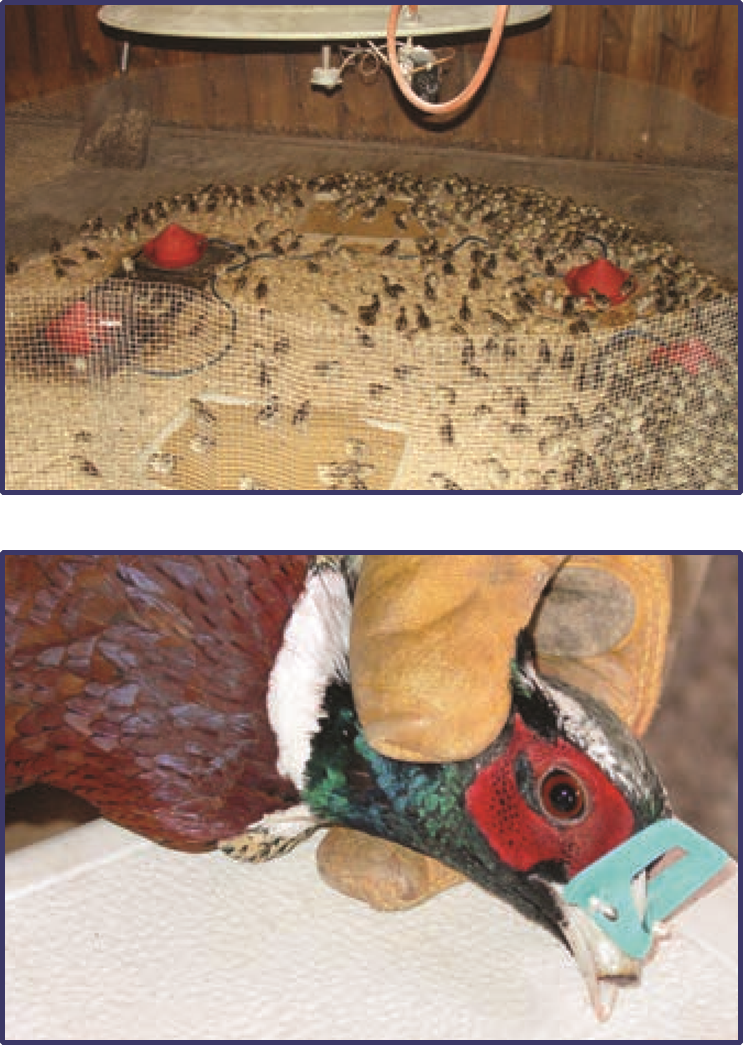
After hatch, pheasants are placed inside brooder barns very similar to facilities used for raising floor poultry. Low light intensity in the brooder barn is very important in helping reduce aggression among chicks. Spot or partial house brooding is more common than heating the entire house. Room temperature is variable (85°- 88° on average) with the temperature under the hoover at 100°F. Temperatures are then dropped 5°F per week until ambient temperatures are attained.
Moving to outdoor flight pens
Between 5-8 weeks of age, game birds are ready to be placed outdoors. Specs, also called peepers or blinders, are often placed on the birds one week prior to when they are moved outside. Specs are hour glass-shaped pieces of plastic that are placed over the cere on the upper beak. They are kept in place with a thin, long piece of plastic inserted through external nares, the nasal septum, and through holes in the specs. Specs allow birds to see to the side, but not straight ahead. They are an effective tool to reduce cannibalism. Game birds are kept in flight pens until they are ready to be sold.
Management/Disease challenges in flight pens
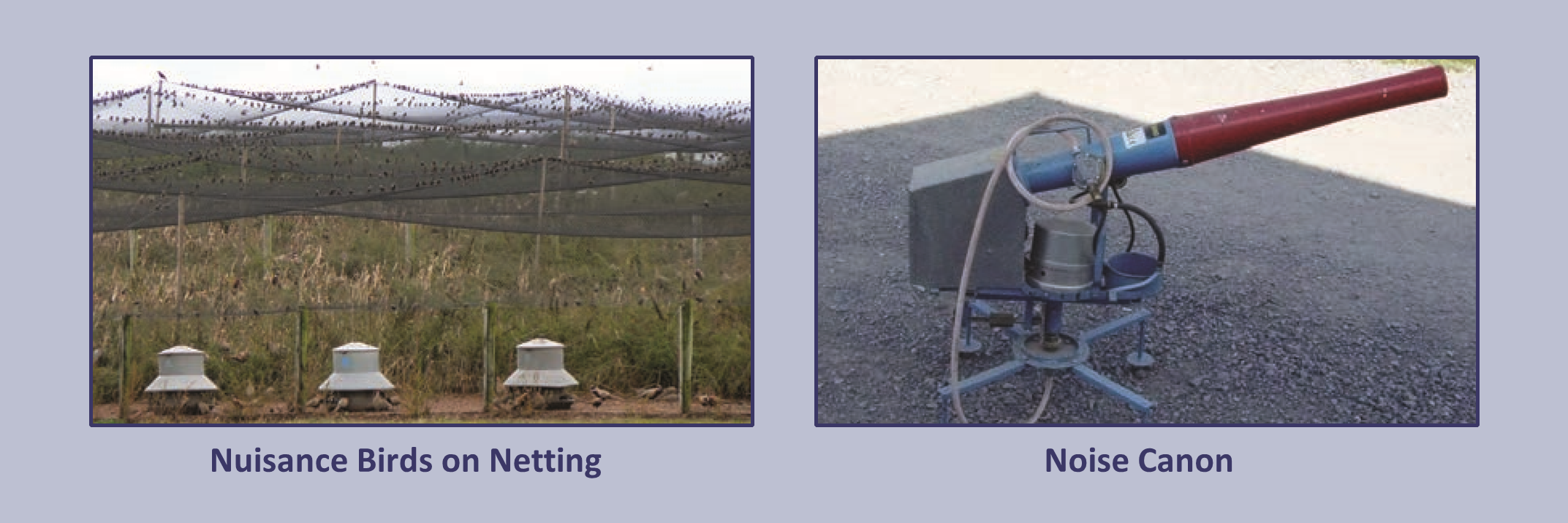
Once outdoors, severe weather (heavy rains, late spring snow storms, hail, and winds) may cause some mortality. Predators, such as hawks, owls, skunks, and weasels, sometimes take a heavy toll on the flock. Sometimes nuisance birds (such as starlings and blackbirds) descend in large numbers on the netting and are a disease risk to game birds, which can be seen in the photograph below. Internal parasites are the most common diseases seen in the flight pens. Thread worms (Capillaria species) may cause severe weight loss and high mortality. Tracheal worms (gapeworms, Syngamus trachea) cause respiratory distress and elevated death loss. Noise cannons may be brought in to frighten prey and pests.
Reference: "USDA APHIS | FAD Prep Industry Manuals". Aphis.Usda.Gov. 2013. https://www.aphis.usda.gov/aph...
The manual was produced by the Center for Food Security and Public Health, Iowa State University of Science and Technology, College of Veterinary Medicine, in collaboration with the USDA Animal and Plant Health Inspection Service through a cooperative agreement.









